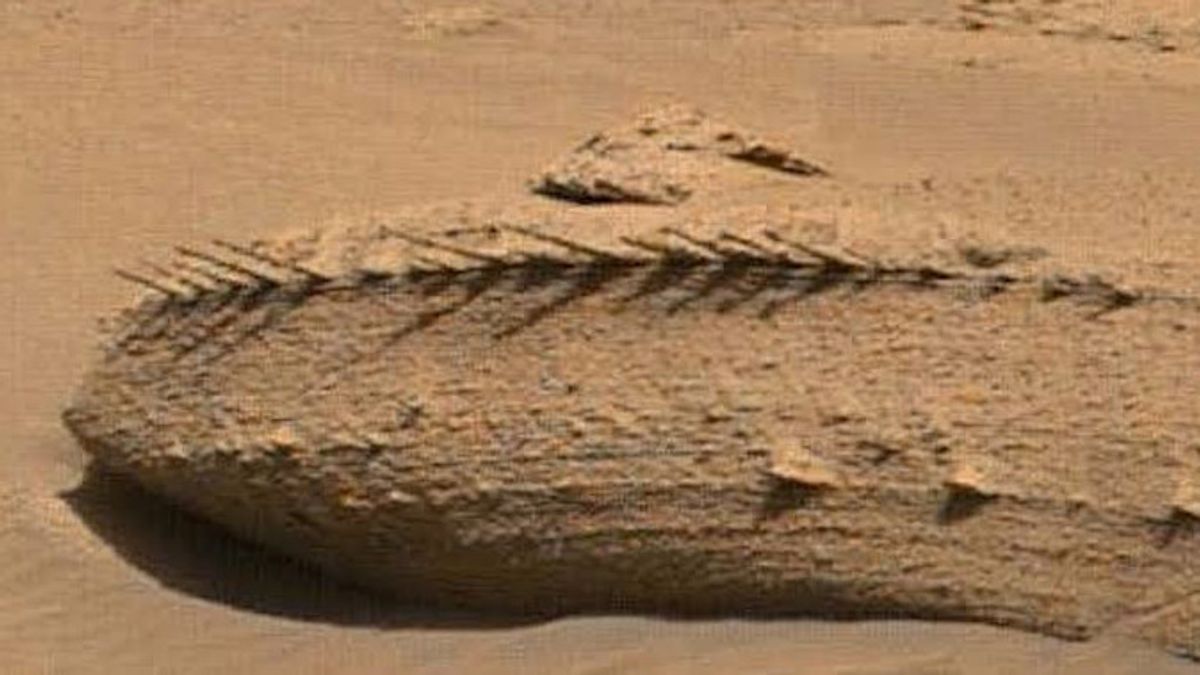JAKARTA - Mars is again showing its mystery, with NASA's Curiosity rover robot finding dragon bones-like stones at the bottom of Gale Crater on April 1.
Gale Crater is the bottom of a dry lake on Mars with a diameter of 96 miles, estimated to be around 3.5 to 3.8 billion years old. Mount Aeolis Mons, which towered 18,000 feet, is also above the crater.
NASA sent Curiosity to explore the crater in November 2011 due to evidence of water in the past. Organic molecules preserved in rock bases aged 3.5 billion years were discovered in craters in 2018, supporting conditions on the Red Planet may have supported life.
The dragon bone-like stone was successfully immortalized with a pole camera and ChemCam, many believe this strange formation was caused by Martian winds, as if blowing over the loose sand.
In 20 years of studying Mars, that's the most bizarre rock I have ever seen. I cannot wait to have a microscopic image of this one...It is part of a Gigapan of Gale crater that you can see here: https://t.co/LxljtDHyIl pic.twitter.com/wHhn1ckqjL
— Nathalie A. Cabrol (@shasta721) April 10, 2023
Some scientists have compared the structure to fish bones or spruce tree branches. Astrobiologist Nathalie A. Cabul shared his photo on Twitter, commenting in 20 years studying Mars, it was the strangest rock he had ever seen.
"I can't wait to have a microscopic image of this one," tweeted Cabul. He also added, this phenomenon is likely a ripple remnant after a lot of erosion.
However, humans will not be able to investigate the phenomenon further than the first astronauts to land on Mars in a decade or so.
The dragon bone was not the first strange formation to be photographed by a Curiosity rover that confused scientists.
In February 2022, the rover robot managed to capture images that looked like flowers and were like corals in Gale Crater, which were actually microscopic mineral formations.
NASA scientists confirmed it was a crystalline cluster of diagenesa, smaller than a penny, which may have been formed by water-swelling minerals, as quoted by DailyMail, Monday, April 17.
The English, Chinese, Japanese, Arabic, and French versions are automatically generated by the AI. So there may still be inaccuracies in translating, please always see Indonesian as our main language. (system supported by DigitalSiber.id)













